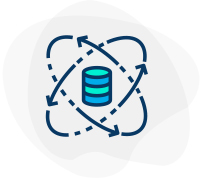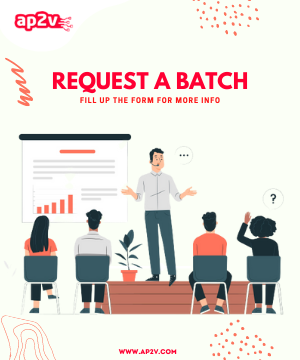Top 21 Node.js Interview Questions
Top 21 Node.js Interview Questions
- 4.9 Rating
- 21 Question(s)
- 60 Mins of Read
- None Reader(s)
It is an open-source cross platform JavaScript runtime environment and library to run web applications outside the client’s browser. Server-side web applications are created using node.js. Node.js uses asynchronous, event-driven model and hence is it used for data-intensive applications. It is also used for developing real-time web applications, network applications, general-purpose applications, and distributed systems. It is also implemented for I/O intensive web applications like video streaming sites.
Building scalable network programs is easy with node.js. It is preferred by programmers as:
• It is fast.
• There is no risk of blocking.
• A unified programming language and data type are offered by node.js.
• It offers an asynchronous process for every task.
• Concurrency is achieved through it.
3. What is the difference between JavaScript and node.js?
JavaScript Node.js
It is a programming language It is an interpreter and has an environment for JavaScript
It is used for client-side activity for a web application. Used to access or perform non-blocking operation on any operating system
It runs on Spider monkey(Firefox), JavaScript Core(Safari), V8(Google Chrome), etc. It runs only on V8(Google Chrome)
Node.js uses a single threaded model in order to support asynchronous processing. Asynchronous processing makes the application perform better and is more scalable under web loads.
Node.js follows the workflow as mentioned below.
• Client sends blocking or non-blocking requests to the webserver to interact with the web application.
• Queries for data are created.
• Data deletion is done.
• Data is updated.
• Node.js retrieves the incoming queries and adds them to the Event Queue.
• After that, each request is passed to the Event Loop one by one.
• During this process, it checks if the requests do not require any external resources.
• Event Loop processes simple requests (non-blocking operations), such as I/O Polling, and returns responses to the client.
The programming that heavily uses events for triggering various functions is called event-driven programming. A mouse click and key press all are considered as events. A call back function is executed that is already registered with the element after the occurrence of an event. Event-driven programming makes the Node.js faster when compared to other technologies.
The most common database used with node.js is MongoDB. It is a NoSQL, cross-platform, document-oriented database providing high performance, high availability, and easy scalability.
The most commonly used libraries in node.js are:
ExpressJS: It is a web application framework that is used to develop web and mobile applications using a wide set of features.
Mongoose: It is a web application framework that allows the easy connectivity of an application to a database.
Node.js uses the “require” command to import external libraries.
The asynchronous callbacks are handled by Event loop. Event loop is the foundation of the non-blocking input/output in Node.js. It is one of the most important environmental feature.
The nextTick() and setImmediate() processes are used to differentiate between the method and the product.
The nextTick() process postpones the execution of action until the next pass around the event loop, or the callback function is initiated after the event loop’s current execution is completed.
The setImmediate() executes a callback on next cycle of the event loop and returns control to the event loop for any I/O operations.
Read and writing of data continuously is done using the Streams. These are in the form of objects in Node.js.
The four different Streams in Node.js are:
Readable: Used to read operations.
Writable: Used to write operations.
Duplex: Both read and write operations can be performed using this Stream.
Transform: It is a type of duplex Stream that generates the output based on the input.
• All Node.js library APIs are asynchronous and hence they are non-blocking.
• As a result, the application moves on to the next API after calling it, and a notification mechanism from a Node.js event notifies the server for the previous API call.
REPL stands for Read Eval Print Loop that represents a computer environment. The command is entered similarly to a command in Windows or a Unix/Linux shell.
REPL performs the following task:
Read: The user input is read and parses the input into JavaScript data-structure and stores in memory.
Eval: It takes the data structure and evaluates it.
Print: The result is printed.
Loop: The above command is sent into the loop until the ctrl-c command is used twice by the user.
Front-end development Back-end development
Mark up and web development languages like HTML, CSS, JavaScript are used Programming and scripting languages like Python, Ruby, Perl, etc. are used
It works on asynchronous requests and AJAX It works on Server Architecture
It provides better accessibility It provides enhanced security
It is used for SEO It is used for Backup
It is the code that is executed between the asynchronous function calls in Node.js. The following are the steps used to execute it:
• The first step involves controlling the order of the execution.
• Next, collection of the required data.
• Next, limitation of the concurrency.
• After this invoke the next step of the program.
A global in Node.js is an object that is global by nature and can be found in all modules. As opposed to having to include them explicitly, these objects can be used directly in your application. They could be modules, functions, strings, objects, etc. Furthermore, some of these objects can be in the module scope instead of the global scope.
NPM stands for Node Package manager. It manages all the packages and modules for Node.js.
It offers two main functionalities:
It consists of online repositories for node.js packages/modules that are available in search.nodejs.org.
It is used to install Node.js packages through the command-line utility. It also manages Node.js versions and dependencies.
It is a figure that explains the proportion of unit tests, integration tests, and end-to-end tests that are required for the proper development of a project.
A test pyramid consists of the following components:
Unit tests: The individual units of code are tested in isolation.
Integration tests: They test the integration among dissimilar tests.
End-to-End (E2E) tests: They test the whole interface from the User interface to the data store, and back.
Functions that receive requests and responses are called middleware. It typically performs the following tasks:
• Execute any code
• Update or modify the request and the response objects
• Finish the request-response cycle
• Invoke the next middleware in the stack

{{ crs.category_name.all|join:" • " }}
Django Course Training Online
{{ crs.category_name.all|join:" • " }}
Data Science with Python Training Course …
{{ crs.category_name.all|join:" • " }}
PERL Training Course Online
{{ crs.category_name.all|join:" • " }}
Java Course Training Online
{{ crs.category_name.all|join:" • " }}
Python Core Training Course Online
{{ crs.category_name.all|join:" • " }}
Hadoop Training OnlineRecorded Videos
- Enhance students learning Experience.
- Relief the pressure of Note-Taking.
- Lifetime Access.
- Learning Flexibility.
- Easy to retakes of each sessions.
- Pocket friendly course.
Live Interactive Classes
- Lectures bring together diversed group of students to learn in different ways.
- Live interactive Instructor-led training.
- 24 x 7 hours learning assistance.
- Have a team of well-qualified expert trainers.
- Lifetime access of class recordings.
- Affordable fees.
Sign in to your account
Sign in to your account
Welcome back! Login with your data that you entered during registration.
-
-
Email and Password are case sensitive...
- Forget Password
Forget Password
We will send a password reset link on your email.
-
Please enter registered email.
Create Account
Create Account
Use your email for registration.
-
Please enter name
-
Please enter email
-
Please enter password
Must be grater 6 characters as long.
Can contain any letters a to z or A to Z.
Can contain some special characters eg(@,#,$,%,&,*,%).
Can contain any numbers from 0 to 9.
The package.json is the manifest file that contains the metadata of the project where we define the properties of a package.

{{ crs.category_name.all|join:" • " }}
Django Course Training Online
{{ crs.category_name.all|join:" • " }}
Data Science with Python Training Course …
{{ crs.category_name.all|join:" • " }}
PERL Training Course Online
{{ crs.category_name.all|join:" • " }}
Java Course Training Online
{{ crs.category_name.all|join:" • " }}
Python Core Training Course Online
{{ crs.category_name.all|join:" • " }}
Hadoop Training OnlineRecorded Videos
- Enhance students learning Experience.
- Relief the pressure of Note-Taking.
- Lifetime Access.
- Learning Flexibility.
- Easy to retakes of each sessions.
- Pocket friendly course.
Live Interactive Classes
- Lectures bring together diversed group of students to learn in different ways.
- Live interactive Instructor-led training.
- 24 x 7 hours learning assistance.
- Have a team of well-qualified expert trainers.
- Lifetime access of class recordings.
- Affordable fees.
Sign in to your account
Sign in to your account
Welcome back! Login with your data that you entered during registration.
-
-
Email and Password are case sensitive...
- Forget Password
Forget Password
We will send a password reset link on your email.
-
Please enter registered email.
Create Account
Create Account
Use your email for registration.
-
Please enter name
-
Please enter email
-
Please enter password
Must be grater 6 characters as long.
Can contain any letters a to z or A to Z.
Can contain some special characters eg(@,#,$,%,&,*,%).
Can contain any numbers from 0 to 9.





